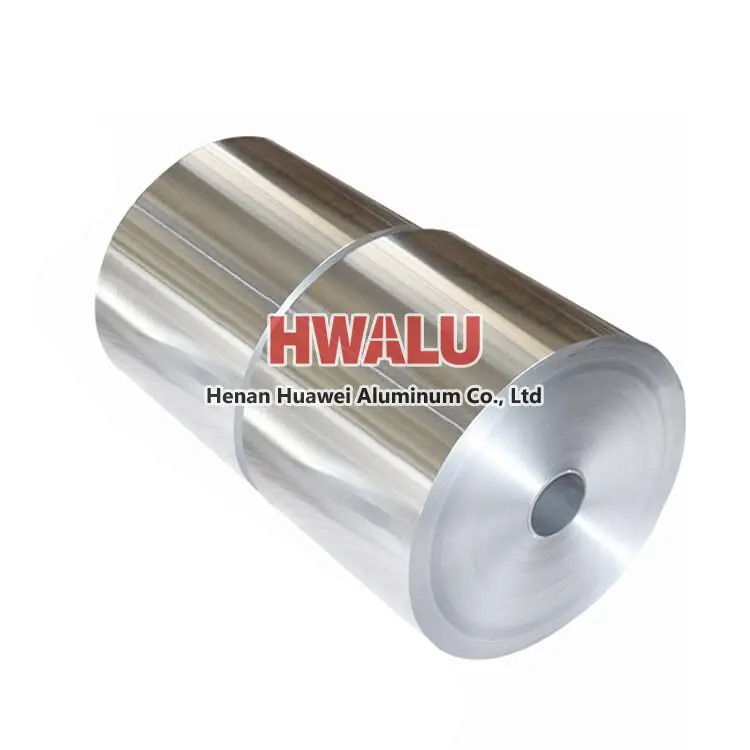What is a lidding foil? Lidding foil, also known as lid foil or lid, is a thin sheet of aluminum or composite material used to seal containers such as cups, jars, and trays to protect the contents inside. Lidding foils come in a variety of shapes, sizes, and designs to suit different types of containers and packaging applications. They can be printed with branding, logos, and product information to enhance a ...
Aluminum foil supplier for India Huawei Aluminum Foil Factory exports a large amount of aluminum foil products to India every year, and we are able to provide aluminum foil products for a variety of application types. What types of aluminum foil are classified according to application? Aluminum foil comes in various types, and its classification often depends on the specific application for which it is int ...
aluminium foil specification Aluminum foil for coated foil Coated Products gauges/thicknesses 0.00035” - .010” Coating thicknesses .002″ Width .250” - 54.50” Length customize aluminum foil for coated foil We offer a variety of Coated Products Carbon coated aluminum foil Heat Seals Corrosion Resistant Epoxies Slip Lubes Print Primers Release Coatings, ...
so What is Aluminum foil grade 1235? 1235 Alloy Aluminum Foil is an aluminum alloy material commonly used in the packaging industry. It is as high as 99.35% pure, has good flexibility and ductility, and also has good electrical and thermal conductivity. The surface is coated or painted to increase its resistance to corrosion and abrasion. 1235 Alloy Aluminum Foil is widely used in food packaging, pharmaceu ...
Understanding of Aluminium Foil Tape Aluminium foil tape, also known as aluminium foil tape, is a thin layer of metal foil (usually aluminium foil) with a strong adhesive material on one side. This combination of materials makes the tape very durable. Therefore, aluminium foil tape has many excellent properties and a wide range of applications. Characteristics of aluminium foil tape What are the advantages ...
What is 1200 alloy aluminum foil? 1200 alloy aluminum foil for industrial pure aluminum, plasticity, corrosion resistance, high electrical conductivity, and thermal conductivity, but low strength, heat treatment can not be strengthened, poor machinability. This is a high-strength aluminum material that can pass heat treatment, plastic strength under quenching and newly quenched states, and cold strength during s ...
Since aluminum foil has shiny and matte sides, most of the resources found on search engines say this: When cooking food wrapped or covered with aluminum foil, the shiny side should face down, facing the food, and the dumb side Glossy side up. This is because the glossy surface is more reflective, so it reflects more radiant heat than matte, making the food easier to cook. Is it really? Let's analyze the heat ...
In the production process of aluminum foil, there are multiple processes such as rolling, finishing, annealing, packaging, etc. The interlocking production process, any problem in any link may cause aluminum foil quality problems. The quality defects of the purchased aluminum foil products will not only affect the appearance, but also directly affect the quality of the products produced, and even more directly ca ...
Anodized Aluminum Foil Overview Anodized aluminum foil is aluminum foil that has been anodized. Anodizing is an electrochemical process in which aluminum foil is immersed in an electrolyte solution and an electric current is applied. This causes oxygen ions to bond with the aluminum surface, forming a layer of aluminum oxide. It can increase the thickness of the natural oxide layer on the aluminum surface. This ...
The rolling oil and other oil stains remaining on the surface of the foil, which are formed on the foil surface to varying degrees after annealing, are called oil spots. The main reasons for oil spots: high degree of oil in aluminum foil rolling, or inappropriate distillation range of rolling oil; mechanical oil infiltration in aluminum foil rolling oil; improper annealing process; excessive oil on the surface ...
1.Convenience: Large rolls of aluminum foil can be cut at any time, convenient for packaging food of various shapes and sizes, very flexible. 2.Freshness preservation: Aluminum foil can effectively isolate air and moisture, prevent food from going bad, and prolong the freshness period of food. 3.Durability: Aluminum foil has excellent heat resistance and tear resistance, can withstand high temperature and p ...
Aluminum foil is typically thinner than aluminum coil. Aluminum foil is typically available in various thicknesses, ranging from as thin as 0.005 mm (5 microns) up to 0.2 mm (200 microns). The most commonly used thicknesses for household aluminum foil are around 0.016 mm (16 microns) to 0.024 mm (24 microns). It is commonly used for packaging, cooking, and other household purposes. On the other hand, alumin ...









